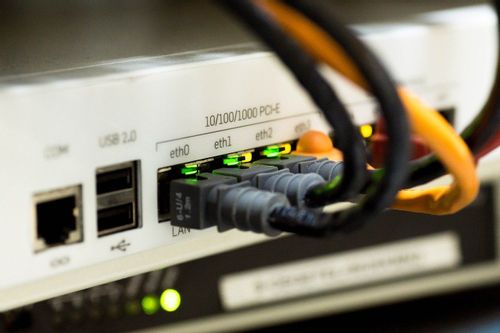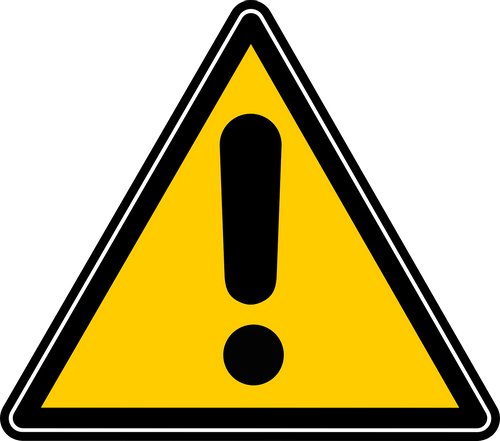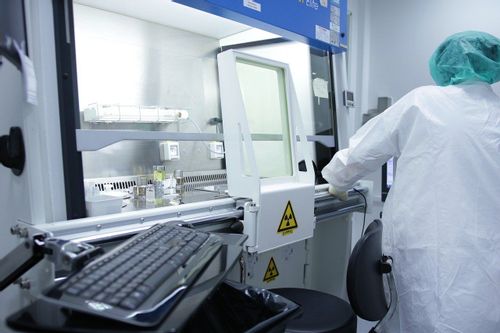Standards Packages
iTeh together with SIST has developed and compiled a comprehensive collection of standard packages to support your standard requirements. Our packages cover an array of content that includes quality management, risk management, road vehicles, machine safety, and much more. With over 200 packages to choose from, you are sure to find a collection to suit your standard needs.
Latest Standards
- Standard9 pagesEnglish languagesale 15% off
- Draft9 pagesEnglish languagesale 15% off
- Draft9 pagesEnglish languagesale 15% off
This document gives a method for determining the resistance to cracking of steel pipes in sour service. This test method employs a full-scale test specimen consisting of a short length of pipe (a ‘full ring’), sealed at each end to contain the sour test environment within. The test method applies to any pipe; seamless, longitudinally welded (with or without filler), helical welded, and to girth welds between pipes. NOTE 1 The specimen is usually a pipe but can also consist of flange neck or section of a bend, or other tubular component or a combination of the above. NOTE 2 This test method can also be used for corrosion resistant alloys (CRAs). The method utilizes ovalization by mechanical loading to produce a circumferential stress, equal to the target hoop stress, at two diametrically opposite locations on the inside surface of the test specimen. The test specimen is then subjected to single sided exposure to the sour test environment. NOTE 3 The test also allows measurement of hydrogen permeation rates.
- Standard52 pagesEnglish languagesale 15% off
- Standard54 pagesFrench languagesale 15% off
- Draft53 pagesEnglish languagesale 15% off
- Draft53 pagesEnglish languagesale 15% off
This document specifies the radiation transmission method for measurement of density of the water-sediment mixture, suspended or deposited, in water bodies such as streams, canals, harbour basins, dams and reservoirs. The method is based on principles of transmission of X or Gamma rays. This document covers brief description of the operating principle of the method and details of some of the instruments used. This document applies to the measurement of water-sediment mixture density in water bodies using radiation transmission method, particularly gamma and X-ray transmission method. The working principles, applications, advantages and associated instruments are elaborated in this document.
- Standard14 pagesEnglish languagesale 15% off
- Draft14 pagesEnglish languagesale 15% off
- Draft14 pagesEnglish languagesale 15% off
This document explains concepts and provides approaches to the following aspects of the production of reference materials (RMs): — the assessment of homogeneity; — the assessment of stability and the management of the risks associated with possible stability issues related to the properties of interest; — the characterization and value assignment of properties of an RM; — the evaluation of uncertainty for certified values; — the establishment of the metrological traceability of certified values. The guidance given supports the implementation of ISO 17034. Other approaches can also be used as long as the requirements of ISO 17034 are fulfilled. Brief guidance on the need for commutability assessment (6.11) is given in this document, but no technical details are provided. A brief introduction for the characterization of qualitative properties (9.6 to 9.8) is provided, together with brief guidance on sampling such materials for homogeneity tests (7.4.1.2). However, statistical methods for the assessment of the homogeneity and stability of RMs for qualitative properties are not covered. This document is also not applicable to multivariate quantities, such as spectral data. NOTE ISO 33406 gives more information on the production of RMs with one or more qualitative property values.
- Standard98 pagesEnglish languagesale 15% off
- Standard106 pagesFrench languagesale 15% off
- Draft96 pagesEnglish languagesale 15% off
- Draft96 pagesEnglish languagesale 15% off
This document specifies the measurement methods and specification of image quality of lenticular prints that are used for changing images. This document does not cover lenticular prints that are used for 3D images. NOTE Lenticular prints for 3D images can be measured with the same types of procedures. However, it needs more information, such as the dependence of the measurement distance, to evaluate the 3D performance. This document specifically describes measurement methods for crosstalk, viewing angle range, angular misalignment from the designed viewing angle and the uniformity of the image within the printing area of the lenticular print images. These are critical for the image quality of lenticular prints for changing images. This document is applicable to lenticular prints produced by printing technologies that include impact and non-impact printing. Examples of the former are off-set, gravure and flexography, while the examples of the latter are silver halide, inkjet, dye diffusion thermal transfer and electrophotography. The multiple laser images (MLI) and changeable laser images (CLI) process of using a laser to write through a lenticular screen at different angles to create two monochrome images is also used.
- Standard28 pagesEnglish languagesale 15% off
- Draft28 pagesEnglish languagesale 15% off
- Draft28 pagesEnglish languagesale 15% off
This document specifies two methods for the determination of the flux content of a sample flux-cored solder wire.
- Standard4 pagesEnglish languagesale 15% off
- Standard4 pagesFrench languagesale 15% off
- Draft4 pagesEnglish languagesale 15% off
- Draft4 pagesEnglish languagesale 15% off
This document specifies a coding system for the classification and designation of solid and flux-cored solder wire, and the performance requirements to be met by flux-cored wire and its constituents. Requirements for sampling, labelling and packaging are also specified.
- Standard11 pagesEnglish languagesale 15% off
- Standard11 pagesFrench languagesale 15% off
- Draft11 pagesEnglish languagesale 15% off
- Draft11 pagesEnglish languagesale 15% off
This document gives definitions and specifies techniques for the preparation of samples for the chemical analysis of silicon-carbide-containing raw materials and refractory products including: a) SiC raw materials; b) graphite brick containing silicon carbide; c) silicon carbide brick (includes the bricks containing silicon nitride, silicon oxynitride, sialon); d) refractories containing carbon and/or silicon carbide mixed with clay; e) refractories containing carbon and/or silicon carbide mixed with silica (and fused silica); f) refractories containing carbon and/or silicon carbide mixed with high alumina material; g) refractories containing carbon and/or silicon carbide mixed with magnesia (and dolomite); h) refractories containing carbon and/or silicon carbide mixed with chrome mineral or magnesia-chrome materials; i) refractories containing carbon and/or silicon carbide except those described in a) to h) above. The items of analysis described in ISO 21068-2, ISO 21068-3 and ISO 21068-4 are as follows: — loss on drying (LOD); — loss on ignition (LOI); — total carbon, Ctotal; — free carbon, Cfree; — silicon carbide, SiC; — free silicon (Sifree); — free aluminium (Alfree); — free magnesium (Mgfree); — free iron (Fefree); — silicon(IV) dioxide (SiO2); — aluminium(III) oxide (Al2O3); — iron(III) oxide (Fe2O3); — titanium(IV) oxide (TiO2); — calcium oxide (CaO); — magnesium oxide (MgO); — sodium oxide (Na2O); — potassium oxide (K2O); — chromium(III) oxide (Cr2O3); — zirconium(IV) oxide (ZrO2); — boron oxide (total boron calculated as B2O3); — nitrogen; — oxygen; — nitrides (undifferentiated: Si3N4, AlN, BN, sialon, oxy-nitrides, etc.); — mineralogical phases (XRD-methods).
- Standard6 pagesEnglish languagesale 15% off
- Standard7 pagesFrench languagesale 15% off
- Draft6 pagesEnglish languagesale 15% off
- Draft6 pagesEnglish languagesale 15% off
This document specifies a method for the measurement of effective focal spot dimensions above 0,1 mm of X-ray systems up to and including 1 000 kV X-ray voltage by means of the pinhole camera method with digital evaluation. The tube voltage applied for this measurement is restricted to 200 kV for visual film evaluation and can be selected higher than 200 kV if digital detectors are used. The imaging quality and the resolution of X-ray images depend highly on the characteristics of the effective focal spot, in particular the size and the two-dimensional intensity distribution as seen from the detector plane. Compared to the other methods specified in the EN 12543 series and the ISO 32543 series, this method allows to obtain an image of the focal spot and to see the state of it (e.g. cratering of the anode). This test method provides instructions for determining the effective size (dimensions) of standard (macro focal spots) and mini focal spots of industrial X-ray tubes. This determination is based on the measurement of an image of a focal spot that has been radiographically recorded with a “pinhole” technique and evaluated with a digital method. For the characterization of commercial X-ray tube types (i.e. for advertising or trade), the specific FS (focal spot) values of Annex A can be used.
- Standard15 pagesEnglish languagesale 15% off
- Standard15 pagesFrench languagesale 15% off
- Draft15 pagesEnglish languagesale 15% off
- Draft15 pagesEnglish languagesale 15% off
This document specifies the testing procedures for the instrumental determination of the opacity of tissue paper or tissue products by diffuse reflectance using a paper backing. This document contains specific instructions for the preparation of test pieces of single-ply and multi-ply products, where special preparation/procedures might be necessary. It can be used to determine the opacity of tissue paper and tissue products containing fluorescent whitening agents, provided the UV content of the radiation incident on the test piece has been adjusted to conform to that in the CIE illuminant C using a fluorescent reference standard provided by an authorized laboratory as described in ISO 2470-1.
- Standard12 pagesEnglish languagesale 15% off
- Standard12 pagesFrench languagesale 15% off
- Draft12 pagesEnglish languagesale 15% off
- Draft12 pagesEnglish languagesale 15% off
Establishes general requirements, thicknesses of lines, and the simplified representation of doors and windows. Describes the conventional representation, and gives arrow symbols. Annex A is for information only.
- Standard35 pagesEnglish languagesale 10% offe-Library read for1 day
- Draft31 pagesEnglish languagesale 10% offe-Library read for1 day
This document complements the existing requirements of ISO/IEC 17021-1 for bodies providing audit and certification of quality management systems against ISO 19443.
NOTE This document is recommended for use as a criteria document for accreditation, peer assessment or other audit processes.
- Technical specification26 pagesEnglish languagesale 10% offe-Library read for1 day
This second edition cancels and replaces the first edition (ISO 4172 :1981), clause 2 and subclause 4.3 of which have been technically revised. Specifies general rules for the preparation of working drawings intended for the field assembly of prefabricated structures for building and civil engineering works. Gives normative references, definitions, documentation, designation of prefabricated structural components.
- Standard25 pagesEnglish languagesale 10% offe-Library read for1 day
- Standard25 pagesEnglish languagesale 10% offe-Library read for1 day
- Draft22 pagesEnglish languagesale 10% offe-Library read for1 day
IEC 63267-2-2:2024 defines the dimensional limits of an optical interface for reference connections necessary to meet specific requirements for fibre-to-fibre interconnection of non-angled and angled polished multimode reference connectors intended to be used for attenuation measurements in the field or factory. Several grades of reference connections are defined in this document. The multimode reference connections are terminated to restricted IEC 60793-2-10 A1-OM2b to A1-OM5b fibre at the 850 nm band only. The geometrical dimensions and tolerances of the specified reference connections have been developed primarily to limit the variation in measured attenuation between multiple sets of two reference connectors, and therefore to limit the variation in measured attenuation between randomly chosen reference connectors when mated with connectors in the field or factory.
- Draft11 pagesEnglish languagesale 10% offe-Library read for1 day
IEC 63267-2-1:2024 defines a set of specified conditions for an enhanced macro bend of 50/125 µm, graded index multimode fibre optic connection that is maintained in order to satisfy the requirements of attenuation and return loss performance in a randomly mated pair of polished physically contacting (PC) fibres. An encircled flux (EF) compliant launch condition in accordance with IEC 61300-1, at an operational wavelength of 850 nm, is used for determination of performance grades, based on lateral fibre core offset, numerical aperture (NA) mismatch, and fibre core diameter (CD) variation. Fibre core angular offset is considered insignificant given the state-of-the-art and is excluded as a factor for attenuation estimation. Attenuation and return loss performance grades are defined in IEC 63267-1.
- Draft11 pagesEnglish languagesale 10% offe-Library read for1 day
- Draft15 pagesEnglish languagesale 10% offe-Library read for1 day
- Draft3 pagesEnglish languagesale 10% offe-Library read for1 day
ISO/TS 14265:2011 defines a set of high-level categories of purposes for which personal health information can be processed. This is in order to provide a framework for classifying the various specific purposes that can be defined and used by individual policy domains (e.g. healthcare organizations, regional health authorities, jurisdictions, countries) as an aid to the consistent management of information in the delivery of health care services and for the communication of electronic health records across organizational and jurisdictional boundaries.
The scope of application of ISO/TS 14265:2011 is limited to Personal Health Information as defined in ISO 27799, information about an identifiable person that relates to the physical or mental health of the individual, or to provision of health services to the individual.
- Technical specification20 pagesEnglish languagesale 10% offe-Library read for1 day
This choreographies document describes ordering between Buyer and Seller where the Buyer wants to reach an agreement with the Seller about an order. It describes a series of activities that govern communication between the parties and refers to the specifications where information and rules that apply are described.
The various possible behaviours of the Seller and Buyer subsequent to the first order communication are conveyed by variants of this choreography that are described in 5.2.
Previous activities (e.g. cataloguing) and subsequent activities (e.g. invoicing) are outside the scope of this document. If performed electronically, their implementation is covered by other choreographies.
The identifier of this choreographies document is EN 17016-1:2022.
How to claim conformance to this choreography is described in 5.2.3.
- Standard81 pagesEnglish languagesale 10% offe-Library read for1 day
- Draft74 pagesEnglish languagesale 10% offe-Library read for1 day
New Work Item for the alignment of EN ISO/IEC 15421:2000 with the identical adoption of ISO/IEC 15421:2010
- Standard17 pagesEnglish languagesale 10% offe-Library read for1 day
- Draft14 pagesEnglish languagesale 10% offe-Library read for1 day
Benefits

Full Standards Solution
Our catalog includes not only latest standards but also full meta information about related standardization project lifecycle.

Cost Effective
Our PRICE MATCH GUARANTEE policy with multi-level volume discounts gives our clients the best option in the market. In addition, you can get access to the standards for 3, 10, or 30 days.

Stay Notified
Get alerted to the latest revisions and new standards in the Weekly Newsletter. Standards are constantly changing. Don’t miss a revision that can impact your business.
6 Reasons Why We are The BEST at What We Do
Compliance with international standards is increasingly becoming one of the key competitive advantages in the global market. Our company creates all conditions for the most comfortable implementation of new documents and norms in the processes carried out by your organization. Some of the key advantages of working with us are:
- Cost-effective - multi-level discounts and permanent updates of the functions give our clients the best option on the market.
- e-Library - access to standards for a period of time of your choice. It is a cost-effective solution for keeping updated with the newest standards.
- Company-wide documents - create a company account and connect all employees with access to purchased standards, e-Library documents, and packages.
- All in one spot - all purchased standards are kept in one place with controlled access by the account administrator.
- Client-centric - providing quality consulting is the prerogative and incentive to create new products that accompany your success and scale.
- 24 / 7 client support
We are dedicated to building mutually beneficial and long-term relationships with our clients. That is why our team focuses on creating services to help our customers develop and achieve new productive results.
About Us
iTeh Inc is a software development and IT consulting team of professionals who provide consulting, development and implementation of solutions for all types of businesses.
In cooperation, with the Slovenian Institute of Standardization (SIST), we create a unique solution that covers all aspects of the lifecycle of Standardization organizations. iTeh Standards is a part of the solution that helps SIST to provide and sell their products to Customers.
iTeh Standards Store is an evolving project, our goal is to build long-term relationships with our customers. We believe in delivering quality services to solve our customers' challenges and define success by exceeding our customers' expectations. We are always ready to listen and our experience allows us to provide our customers with helpful effective suggestions. You can contact us by email.
We are committed to providing the best possible experience for our customers.
























